Dan Gurney was a man with a resume stacked with impressive accolades. Gurney was a man with wins in Formula One, Sports Car, Indy Car, NASCAR, Can-Am, Trans-Am, and more. When he wasn’t racing, Gurney was thinking of how to make race cars faster and safer. Perhaps lesser-known was one of his other loves: Motorcycles. Gurney was a lifelong fan of two-wheelers and at one point, he decided to make a motorcycle around similar principles used in race cars. The result was the Alligator, a motorcycle with its weight as low to the ground as possible. Even cooler is the fact that these weren’t just a concept, but a few dozen examples were actually built.
This weekend, I’m gearing up to add another motorcycle to my stable. This one isn’t my typical fare of fine-aged British muscle or quirky American sportbike. Instead, I’m buying a friend’s hot rod project, a Kawasaki Z125 Pro with a 250cc engine swap. It’s a motorcycle with the footprint and weight of a road-legal minibike but with a bit too much power. As I wait to pick up that motorcycle, I’ve been digging through motorcycle history, looking at other oddball builds. That’s when I found Dan Gurney’s wild creation again and I’m amazed I haven’t written about it before.
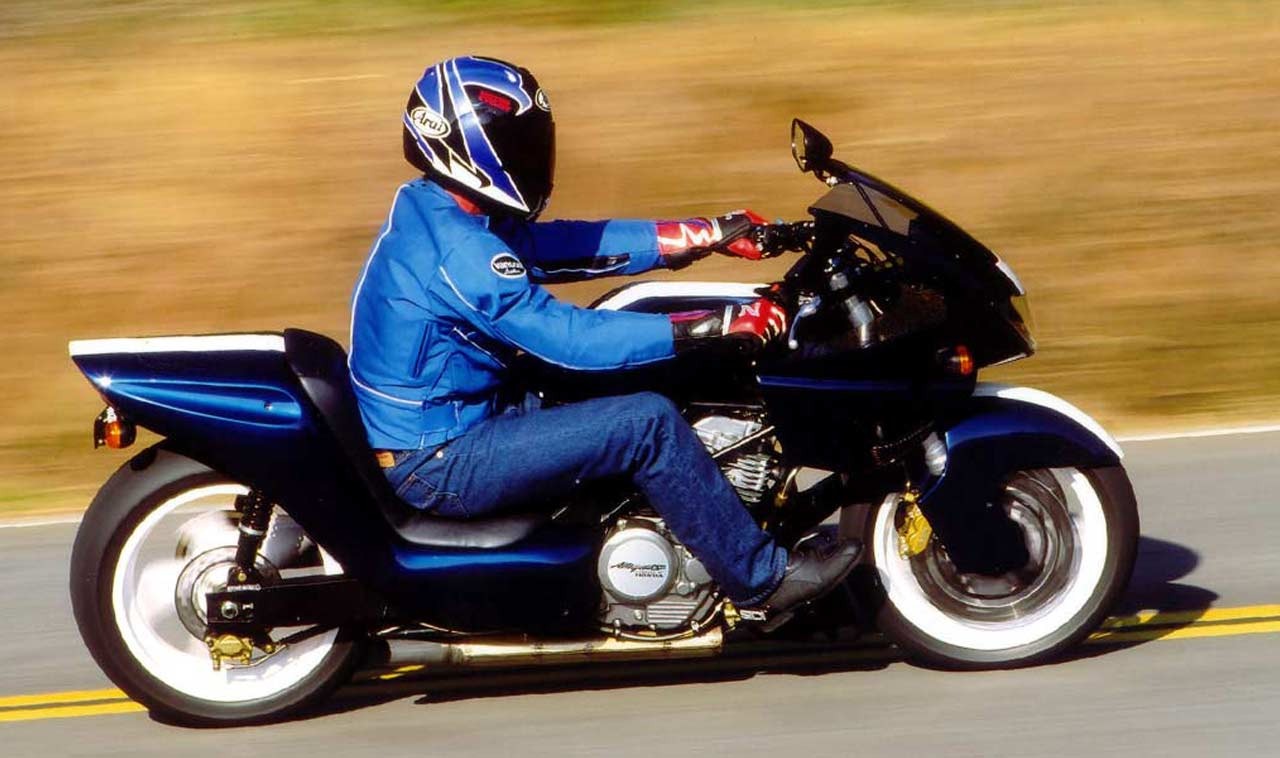
The Dan Gurney Alligator is a real bike and occasionally, you can find them for sale. In fact, Gurney was still making Alligator prototypes well into his later years.
The Legend
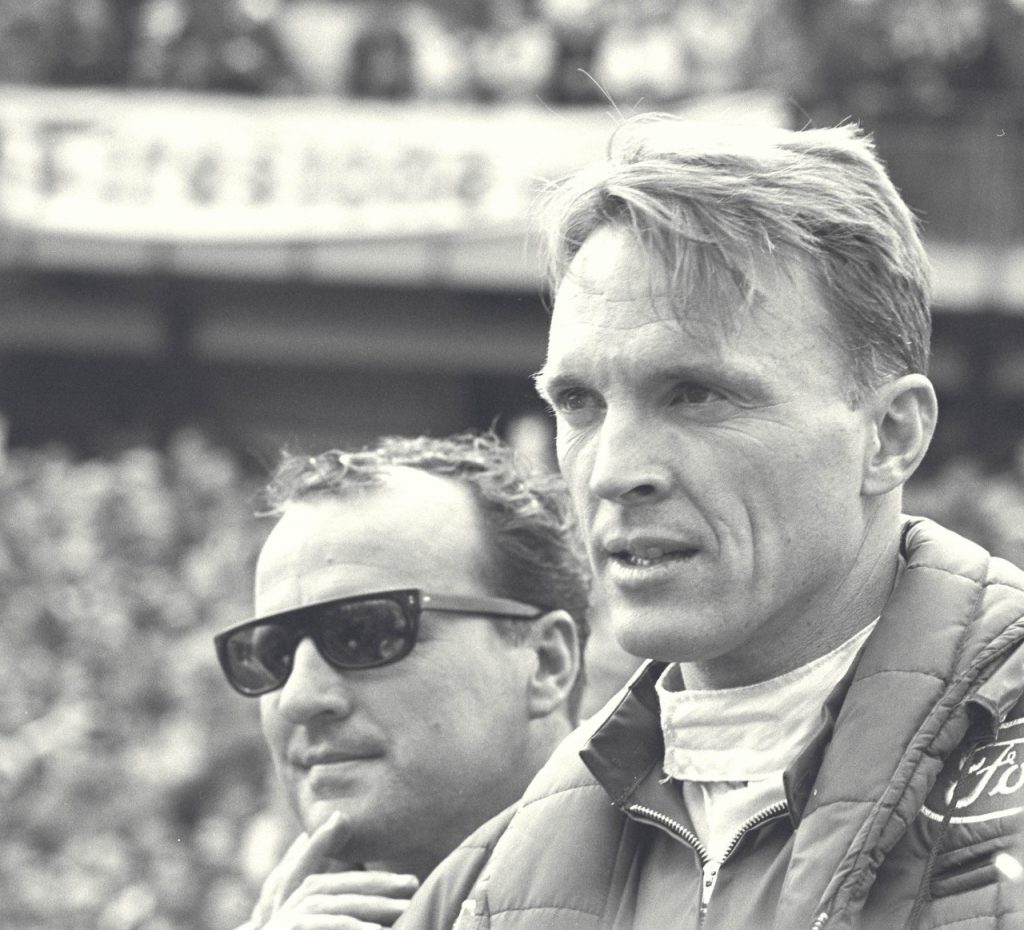
Before I get to the motorcycles, we’ll talk a bit about the man himself. Dan Gurney was born on April 13, 1931, in Port Jefferson, Long Island. He was the son of an opera star and the grandson of an inventor. Gurney would certainly love music and tinkering from an early age, but music to him was not the lovely tones of a person but that of an engine. Over Gurney’s impressive life, he would be a successful racing driver, a race car constructor, an inventor, a team owner, and more.
Along the way, he’s set benchmarks that to this day have not been beaten. In 1967, Gurney took an Eagle Gurney-Weslake V12 to victory in the Grand Prix of Belgium. This was the first and thus far only time an American has built and raced their own car to a World Championship F1 race win.
I’ll let All American Racers (AAR), Gurney’s team, and constructors, explain more about what made his career so great:
Dan’s racing career, which started with a Triumph TR2 in 1955, spanned 15 years. During that time he became a top road racing star in America as well as one of the most popular F1 drivers of the era. He raced for the most prestigious Grand Prix teams of the time: Ferrari, BRM, Porsche, Brabham and later EAGLE bringing a maiden F1 win to Porsche, Brabham (twice) and his own marque. Gurney etched himself a place in racing lore with exciting battles against drivers like Stirling Moss, Jimmy Clark, John Surtees, Jack Brabham, Graham Hill, Phil Hill, Jackie Stewart and many others on the classic European road racing circuits like the Nuerburgring, the Targa Florio, Monaco and Monza. He drove with equal success in Formula 1 and the Sports Car World Championship Series overseas and the Indianapolis, NASCAR, Can-Am and Trans-Am Series at home in the US, The cars he drove and the races he participated in are astonishing in their variety, more astonishing is the fact that most of the time he pursued these different venues within the same season which made him a busy international world traveler year after year.
By the time Dan retired from active driving in 1970, he had raced in 312 events in 20 countries with 51 different makes (more than 100 different models ) of cars winning 51 races, and 47 podiums. Among his most important victories: 7 Formula One races (four Grand Prix World Championship events), 7 Indy Car races, 5 NASCAR Winston Cup stockcar races (all 500 mile races in Riverside, California), and two second place finishes at the “Indy 500”.
Additionally he captured wins in Trans-Am, Can-Am and Sports car races including the endurance classics at the Nuerburgring, Daytona, Sebring and Le Mans. He claimed 42 career pole positions and started on the front row of the grid an additional an astonishing 58 times! see “Gurney Statistics” and the many “races that got away”, i.e. those that Dan was leading – often by a considerable margin – but could not finish due to mechanical problems, made him almost as famous and popular as his wins.

AAR continues and notes that Gurney’s versatility behind the wheel was so good that he was the first driver to post victories in the four major racing categories: Grand Prix, Indy Car, NASCAR, and Sports Cars. That puts him into a league of only three drivers to have accomplished this, the others being Mario Andretti and Juan Pablo Montoya.
As Motorsport.com writes, Gurney also had an equally fascinating knack for inventing things. Gurney was a constructor, but he also brought some novel ideas to racing. The site reports that Gurney brought full-face helmets to open-wheel racing by wearing one during the 1968 Indianapolis 500, the 1968 German Grand Prix, F1, and the Nürburgring. There’s also the Gurney flap, a piece of aluminum right-angle added to the trailing edge of racecar wings to multiply downforce with minimal drag. Motorsport.com also details how Gurney’s wild thinking, along with engineers Trevor Harris and John Ward, led to the 1980 Boundary Layer Adhesion Technology (BLAT) racer, a car that used its bodywork to help keep it grounded to the ground. It was a naturally aspirated racer with the chops of a turbo car.
I won’t go through all of Gurney’s history and there are definitely parts I missed. A lot of people know that because of Gurney’s 6 foot, 4 inch frame, he had a hard time fitting in some cars. This led to developments like the Gurney Bubble. Gurney was so famous that Car & Driver Editor-in-Chief David E. Davis nominated Gurney as the magazine’s pick for President of the United States.
Gurney’s Motorcycles

While you’ll find plenty of pieces out there about Gurney’s racing career and engineering talents, less is said about his love for motorcycles. As Cycle World‘s Dave Despain wrote in 2012, Gurney was a lifelong lover of two wheels. As a kid, Gurney got his early tastes of what was to come when his uncle gave him a book on model airplane engines. Eventually, he became an expert in wrenching on two-stroke engines and was the guy to go to when those model engines needed to get running. Gurney then moved to tuning Whizzer engines on bicycles.
As the Cycle World article continues, Gurney would own a number of motorcycles before he would go on to serve in the Korean War. After the war, Gurney would hone in on auto racing, but motorcycles would remain his other passion in the background. Cycle World interviewed Gurney for that piece, and he indicated that when he wasn’t racing his Triumph car, he rode a motorcycle on dirt as a way to stay sharp. In 1959, Gurney even participated in the Big Bear motorcycle run. This was a 100-mile motorcycle race with no set route or track. It was a challenge to see who could reach Big Bear Lake in California first. In 1959, around 800 motorcyclists took on the challenge and Gurney finished 21st in the massive pack. That was also the same year Ferrari hired Gurney on as a driver.

Cycle World continues with Gurney’s own motorcycle heroes:
Asked to name motorcycle people he considers important in his life, Gurney reels off an eclectic list. “Swede Savage came to AAR from motorcycles. I knew Ed Kretz Sr. and Jr. and Eddie Mulder, who won the ’58 Big Bear. I read a lot about ‘Cannon Ball’ Baker. I’m close friends with both Eddie Lawson and Wayne Rainey. I was a big fan of Derek Minter, who was the king of Brands Hatch at one time. I have a great picture with four different World Champions, including Roger DeCoster, sitting in my Indy Car. Of course, I knew John Surtees very well. Joe Leonard was driving for our team when we first went to Indy. I knew Mike Hailwood very well. I knew John Britten, Erik Buell, Mick Doohan and Barry Sheene.”

Gurney’s motorcycle exploits included being an importer of Spanish Montesa motorcycles, providing a motorcycle for then dirt-track novice Kenny Roberts, and even building a chassis for flat-tracker Chuck Palmgren. As Cycle World writes, Gurney’s love for motorcycles extended into the mission for AAR, from Gurney via Cycle World:
“As we were busy trying to turn out winning automobiles in a very competitive arena, in the back of my mind was the nagging question, ‘Do these same things hold true with motorcycles?’ As we gained the capability of designing and building cars, that meant we were also in a position to build prototype motorcycles.”
The Alligator

Gurney began a mission to find out if what worked for cars would work for motorcycles. His experience running motorcycles in dirt reportedly convinced Gurney that a low center of gravity would benefit motorcycles. As AAR explains, another part of Gurney’s motivation was the fact that a standard motorcycle’s riding position was just too high and too crouched forward for someone of Gurney’s height. In 1975, Gurney tested this theory by calling up Chuck Palmgren to help him cut up an old 350cc single-cylinder Honda into something that looks like a recumbent bike.
Gurney’s belief was that better motorcycle handling was through seating the rider below the tops of the motorcycle’s tires and on the same plane as the engine.
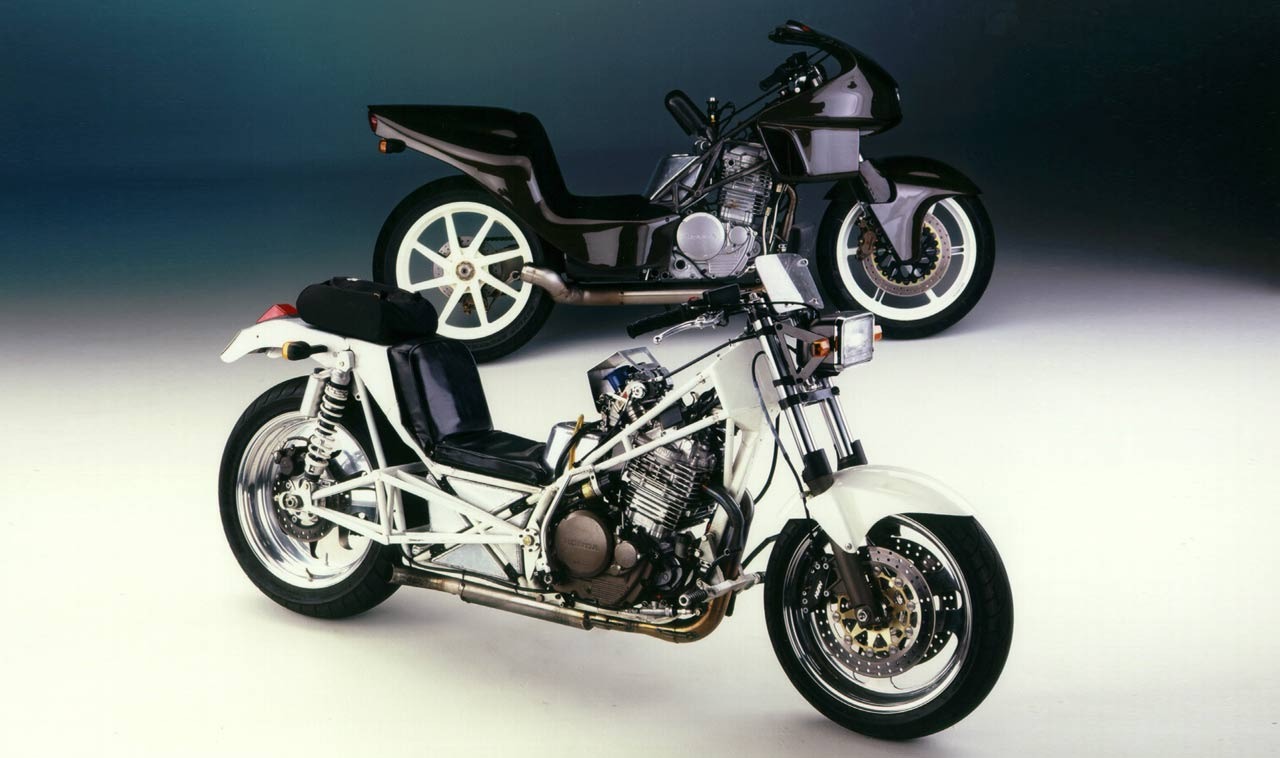
You wouldn’t straddle the motorcycle so much as sit down into it, not unlike a racecar. The logic was that this would bring the motorcycle’s center of gravity as low as possible, which should improve handling and aerodynamics.
Gurney was far from the first person to make a motorcycle like this. Gottlieb Daimler made a similar-looking motorcycle back in 1886 and even the Ner-A-Car had the same general shape. Of course, the Ner-A-Car was built to be a two-wheeled car, not the best-handling motorcycle.

Gurney and his team spent a few decades developing the Alligator, going through several iterations and upping the Honda single-cylinder to 670cc and then 708cc along the way. The motorcycle was called the Alligator in part because it sort of looks like the animal and also because alligators are uniquely American, fierce, and quick.
Why a single-cylinder engine? Well, it goes back to Gurney’s own motorcycle history, his motorcycle heroes, and his fondness for motorcycle dirt racing. Those motorcycles often had big singles and so would his Alligator. When Motorcycle Cruiser asked Gurney why he didn’t give the Alligator more cylinders, he said: “I’d have to make both pistons fire at the same time to make it sound like a single.”
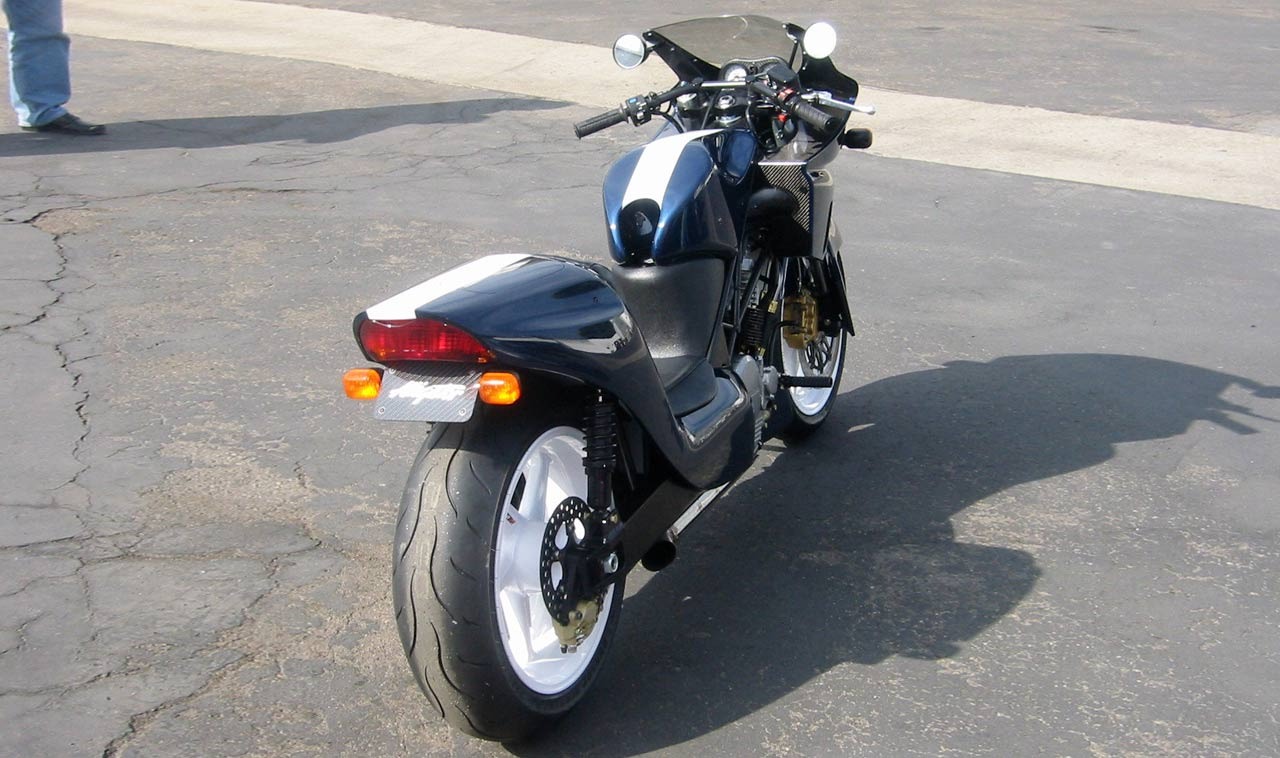
Gurney also felt that singles were just plain fun, and I’m inclined to agree. His motorcycles weren’t slow, either. The 670cc version of the Alligator started life as a Honda 600cc before it was bored out, given fuel injection, custom throttle bodies, custom pistons, a modified oil pump, a hotter cam, and fabricated sensors. The result was a healthy 70 HP from the big thumper.
The 708cc version makes over 70 HP, is capable of hitting 133 mph on pump gas, and oh yeah, it weighs just 320 pounds. It’s lighter than some dirt bikes! That low weight is due in part to the carbon fiber bodywork, designed by Gurney’s son, Justin. The Alligator also has a chromoly frame, magnesium wheels, and an inverted fork from the Honda CBR954. The Honda’s chunky 330mm rotor handles stopping up front while a 220mm rotor brings up the rear.
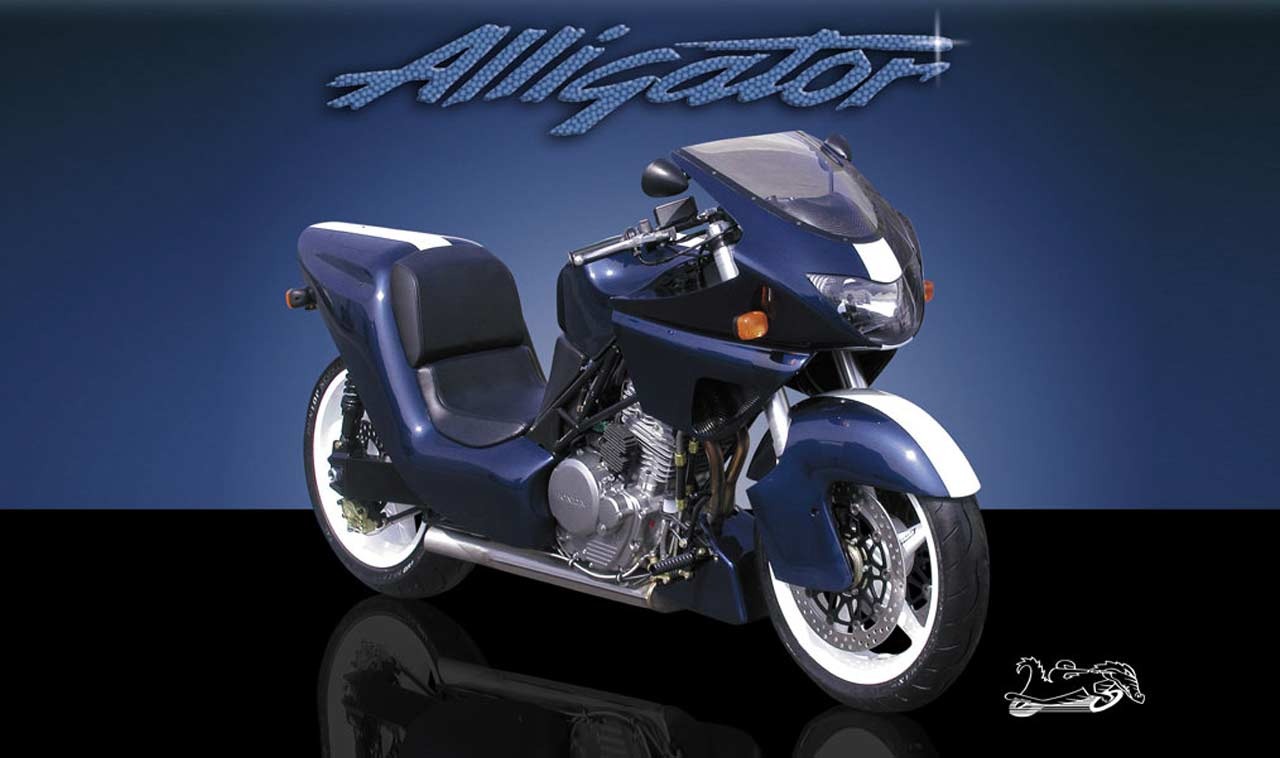
When Gurney started handing out Alligators to the motorcycle press, journalists discovered a new kind of riding experience. From Motorcycle Cruiser‘s review:
At first sight the Alligator looks like a sportbike, and it’s true the bike has high-performance intent. However, when you sit down (and I mean down–the seat height is only 18 inches) and find your footing right behind the front wheel, it feels more like you’re riding an extreme cruiser with a drag bar than the sportbike the sleek bodywork suggests. Of course, as soon as you start rolling down the road you realize this bike really doesn’t feel like either, but rather its own thing, which is, perhaps, a magnificent blend of both.
One of the major benefits of sitting so low in the Alligator is that you never get that “perched” feeling that comes with modern sportbike ergonomics. When you corner aggressively, you are not going over the top of the bike, or even countering movement with the controlled use of your bodyweight. Instead, you are an integral part of the chassis and the slightest shift–what feels like mere thought–affects steering in the most wonderfully smooth and predictable way. Cruisers have a bit of this confidence-inspiring pendulum effect in corners, although they are heavier to steer and in dire need of more ground clearance. I imagine you can scrape something on the Alligator, but I think it may only be your butt cheek.

In 2002, Gurney actually put the Alligator on the market for about $35,000. Production was limited to 36 units and they were painted white and blue. The number and the colors match Gurney’s famed Number 36 Eagle F1 car that won the 1967 Belgian Grand Prix. Apparently, sales of the 36 units were slow as by 2012, just 30 had been built. It’s unclear if or when the last was built.
What is known is that before Gurney’s 2018 passing, he was still tinkering with the Alligator. Back in 2012 and into 2013, Gurney was developing different S&S V-Twin-powered prototype Alligators.

Then, in 2015, Gurney patented a 280 HP 1,800cc twin-cylinder “moment-canceling” engine that eliminates vibration through a pair of geared counter-rotating crankshafts. The engine was originally destined for an updated Alligator, but Gurney’s scope for the engine expanded to boats, cars, and aviation. The explanation behind the engine is that rotating the crankshafts in opposite directions will eliminate the rotating force, or gyroscopic moment, that happens when the engine banks during cornering.
Sadly, it’s unclear if this engine ever ran. Gurney passed in January 2018 and his AAR team hasn’t really given any updates.

The Alligator is another awesome part of Gurney’s legacy and just a few dozen riders have been able to experience a motorcycle concept that has been explored only a few times. You may someday be able to buy one if you happen to catch one in an auction. Despite the rarity and Gurney connection, they apparently sell for a lot less than their original $35,000 asking price. Still, for most of us, this will be a weird motorcycle we can enjoy only on the Internet.

(Images: Dan Gurney’s All American Racers, unless otherwise noted.)
Support our mission of championing car culture by becoming an Official Autopian Member.

- The Red Bull F1 Team, Rivian, Me: Who Made The Biggest Boneheaded Car-Mistake?
- General Motors Figured Out How To Make A Great Diesel Car Engine Just To Kill It Too Soon
- The Future Of The Auto Industry Is Electric, With A Gasoline Backup
- I’m Attending My First Ever Formula 1 Race And I Have No Idea What To Expect
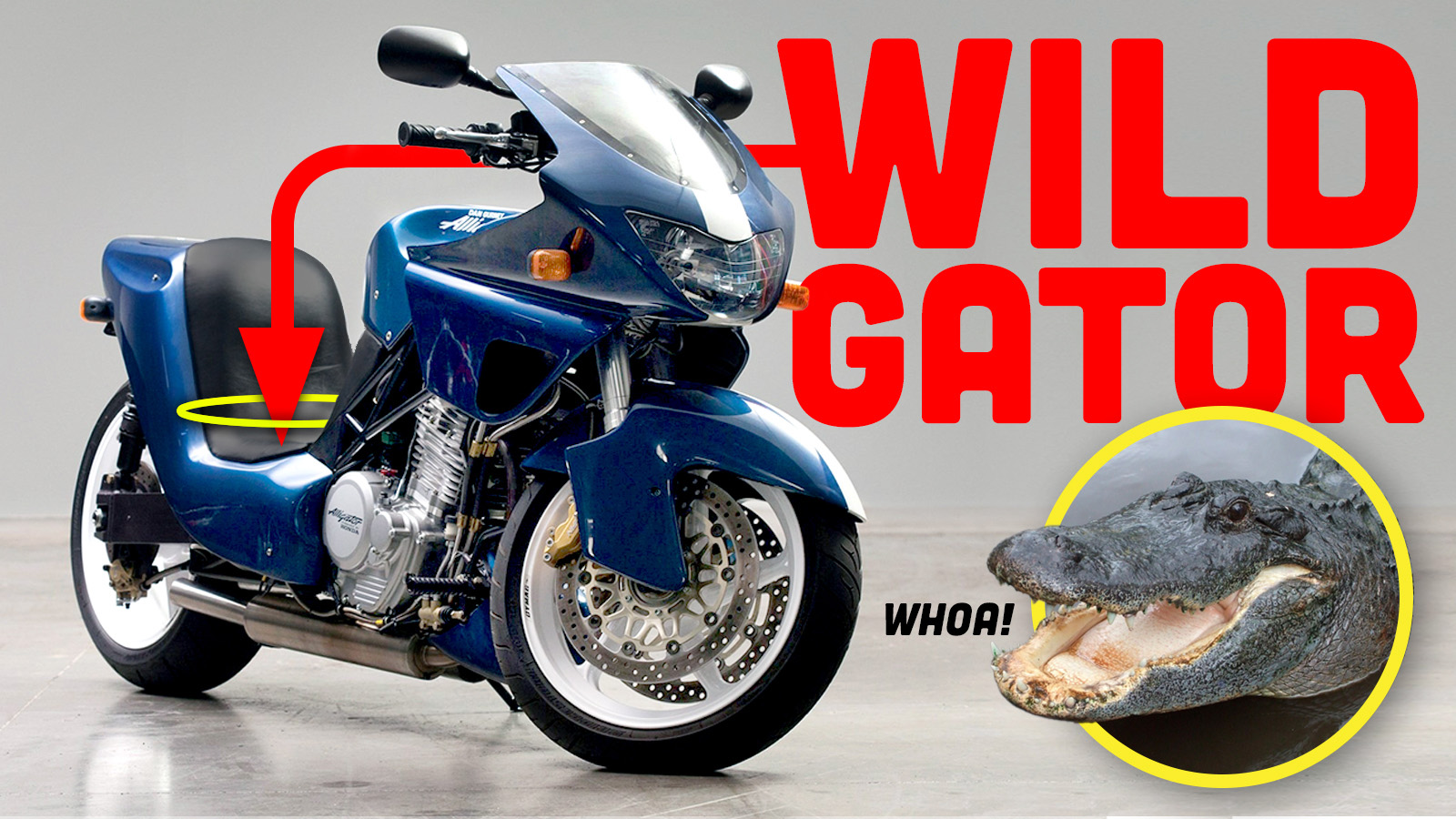

Dan is also the reason why everyone sprays champagne at the end of races or at least he’s the 1st one to have done it, to Henry Ford II no less…
https://www.topgear.com/car-news/motorsport/story-motorsports-first-ever-champagne-spray
I remember using This as my example when 15 years ago I had to explain to another car enthusiast why Dan was such a BFD in racing… that and the “Gurney flap” and the “Gurney bubble” as you pointed out Mercedes.
This is a great write up. I have no clue where I learned about him being the 1st podium champagne sprayer & likewise I never heard (till now) about the alligator.
“Jack Trade” beat me to it (champagne comment), serves me right for not reading & replying to this article right when it came out 🙂
I actually think a flat twin or even 4 cylinder would have been superior to cancel the vibrations as well as bring the weigh lower tot he COG. These things were pretty decent for what they were though. just not good for 2 up and definitely not the most powerful, so the cost plus all that made them pretty Niche Market items.
Saw an Alligator in person many years ago at a BMW rally. Other than its overall oddity, I just remember the wheelbase being very long (at least relative to the rest of the bike).
I’d love to try one of these.It’s probably the only time i’ll be able to drag and elbow!
Weirdly,having a low COG on a motorcycle means you have to lean them more for a given corner speed. Not criticism of this design at all, just thought i’d mention it coz interesting.
For high speed runs yes you do. For your basic riding its more of a standard 1/4 lean. If that makes sense
I would love to just have a go a riding an Alligator. Been a big fan of them ever since I found out they existed.
I Just want to know how it feels. Is it scooter like? Harley like? Just a fairly unique riding position.
Where do you live? If Atlanta you might be in luck
Super late reply. No dice, in sunny California.
Interesting to learn the ergos are 911 esque and for a 6’2 guy since that’s my height as well. Even more intrigued to try it one day.
Just road a livewire earlier today and now I can’t help but think I need/want some sort of EV Alligator motorcycle now. Something about that instant thrust.
Very cool story about a long ride in your Alligator. That’s gotta be a standing record still for distance.
Nothing like a scooter. Harley are big and shake more than a hulu dancer. Dan designed the “cockpit” based off a Porsche 911. If you sit in the Porsche and then jump in to the Gator you will have the same stance. Your arms extend like in the Porsche and you are seated the same. Its actually a very comfortable bike. I’m 6’2 the same as Dan, and weigh 270 lbs. I own about 5 bikes and this is my go to bike. My best friend turned me onto the Gator he has #18 (Brittney) and I have #36 (Grace) My bike is the last bike builded and was owned by Howard, the chief Gator Mechanic at AAR. A few years ago we rode them from Atlanta back to the AAR Factory. Dan was thrilled to see the girls. This was the first time anyone had ridden that far on a Gator. Dan brought back all the people who ever worked on the Gator. It was amazing to hear people tell you, hey I made the mold for the body, hey I made that seat. Hey I help make the frame. There is a banner at Barber Motorsports that Dan had when we crossed the finish line in CA. George and Dan both help us make that trip possible
I would wager the Thumper is probably more vibrational than the current Harley motors, they are disappointingly shake free off the show room floor.
THIS is fricken fantastic! Congrats on a sweet, unique ride and experience!
this is very awesome stuff. this is what makes the autopian so freakin’ good .
I would say probably 15-20 years or so ago I had the pleasure of meeting Dan Gurney at a cars and coffee event in Southern California. He was there, dressed in full leathers, and he had apparently ridden his Alligator there. I had actually read about the Alligator someplace before, and was super excited to see it, and it was a real treat to meet the man as well. He was so down-to-earth and just full.of enthusiasm about his new bike. What a great memory!
OK, this is super cool. I had no idea Gurney was also into motorcycles. The Alligator seems like a very interesting concept.
It looks comfy. I really don’t like riding sportbikes because of the ergonomics. The upright seating and actual seat back look might inviting to my old ass.
Interesting, but nope from this motorcyclist’s point of view.
The low center of gravity is a trade off against transient cornering response, feet forward works well until you can’t unweight your butt on that jump, speed bump or pothole.
The only reason the Alligator was light weight was $$$$.
There are some positives, primarily aerodynamic, however in my book that’s all.
BTW I’m a fan of most of Dan Gurney’s accomplishments, but not this.
As for motorcycle racers turned car racers I think “Mike the Bike” was the best, just because. (-:
You need to ride one. But your wrong in your assement. Take it from me. I own #36
Thanks for responding, that’s cool!
I’m sure it is a blast to ride, I imagine it is great fun on straights and sweepers.
#36 is a magic number isn’t it?
What is wrong in my “assement”?
I was out on my “foot forward” Honda cruiser this afternoon riding back roads and a couple of times at raised railway crossings wished I could have stood up.
As for the low center of gravity and long wheelbase that’s a bit of a two edged sword when it comes to motorcycle cornering physics, good for acceleration and braking though. It is all compromises, it is the nature of motorcycles.
My personal best compromise bike is a Kawasaki Versys 650, high center of gravity, 5.5 gallons of gas perched on top of the frame, another direction of fun entirely.
Maybe I misunderstood what you were explaining. What I do know it that one of the key elelments to a low center gravity bike is the peg placement. To high or to low and the cornering physics are completly out the window. I have encounter way to many times that hidden speed bump, that tire tread in the road. Whats very nice about the Gator, is the peg placement. Just like riding a dirtbike, I can raise up off the seat, by putting pulling pressure on the bars and pushing pressure on the pegs. The first couple encounters I had, my butt was sore for weeks. So we resolved that problem with a canoe airbag as a seat cushion (The gator has cushion, only about a 1′ to a 1 1/2 thickness. Trust me you feel every single pebble, on the road. The cushion was the sweet spot. We tested atleast 6 different cushions to find the right padding need for our rear ends. With very little air in the cushion (about 2 to 3 puffs) we found it the bring us from 18″ off the ground to about 20 to 21″. Major difference for handling and just general riding as a whole.
I bet being down lower like that makes the bike FEEL faster just from a change in perspective.
Not only did it hit the road if actually hit the road
I think I should point out that John Surtees (C.B.E.) was, and still is, the only person to have won World Championships on both two and four wheels. His Wikipedia article makes for interesting reading; the number of both motorcycle and Formula One wins (both as a driver and team owner) is remarkable.
Wow, 2 separate references to Riverside Raceway, the deadly racetrack (31 years, 21 fatalities), that was converted into a deadly mall (at least one stabbing, frequent brawls)! https://www.foxla.com/news/moreno-valley-mall-mob-brawls-crackdown-teen-fights-violence-safety
Well that’s what happens when you build on cursed Indian burial sites…..
Dan Gurney was also the first prospect to say to Brock Yates when he needed a co-driver for the first Cannonball, which Gurney and Yates won in a Ferrari Daytona
I remember seeing articles on the Alligator in the 90s when unusual frames were thing. The idea of a feet forward motorcycle first reappeared with Tony Foale’s Quantum Leap project but had the most modern success with large scooters like the Honda Helix and Suzuki Burgman.
I’ll third that. My KTM 690 ER weighs a hair, more but also makes slightly more power. It’s fun as hell, on or off road.
We have two here at the Petersen Museum. They’re very cool. I sat in? on? one once and it was weird, but I could sense how it worked.
We’re going to see an in-depth article on this, right? 🙂
Dan Gurney for President. I’d vote for him, even posthumously. What a legend. I saw a Gator being ridden at Barber Motorsports. Fascinating design.
Uh, if we’re thinking about the same Gator and time frame (2008?) for an AMA Superbike round, that was Dan Gurney riding it.
This was during a vintage auto race weekend. I believe the motorcycle belongs to the museum but I don’t know who was riding it. I did meet Dan once at Laguna Seca. He was every bit the gentleman you’d expect
Funnily enough I ordered a Dan Gurney for president sticker for my dad’s cobra about a week ago. Originals are crazy expensive for a sticker, but worth it to make my dad smile.
I had one on my pickup for years. Even when he was still alive.
They will be back again this year !
That was Shinji on #18
Dan was the Man. Just a huge figure in almost all of motorsports.
Thanks Mercedes.
Dan used to sometimes show up at the long gone Irvine Cars & Coffee riding one of his personal Alligators. The bike I remember seeing him riding was very well used as if it had many tens of thousands of miles on it. It was awesome to meet a legend and he was always down to talk about bikes or whatever. RIP Dan.
FortNine has a pretty good video about Feet Forward motorcycles:
https://www.youtube.com/watch?v=uk2ou5gt_94
I’ll need to watch that – thank you.
I started riding a long time ago and have never been comfortable with the feet-up-in-a-recliner riding position offered by cruisers.
You’re welcome, that video isn’t too long and opened my eyes to something I hadn’t known about prior. I couldn’t find it but also saw a short of theirs about handling and center of gravity that kind of ties into this Alligator and other feet forward designs.
Perhaps this: https://www.youtube.com/shorts/3TS9BAKKGyc
Or this: https://www.youtube.com/watch?v=GoK4hPtW-rg
Or this: https://www.youtube.com/watch?v=U1mSavQ_DXs
(-;
Thanks for the assist. It was the first video you posted I was thinking about.
IIRC he’s also the cool guy who created the now standard “don’t drink the champagne but spray everyone with it” bit of celebratory fun that is curiously mostly associated with motorsports victories. I can’t think of another sport where this happens.
That always seemed such a waste of good champagne.
(Of course for all we know its actually just cheap seltzer.)
TETSUO! KANEDA!
Neo-Tokyo is about to explode!